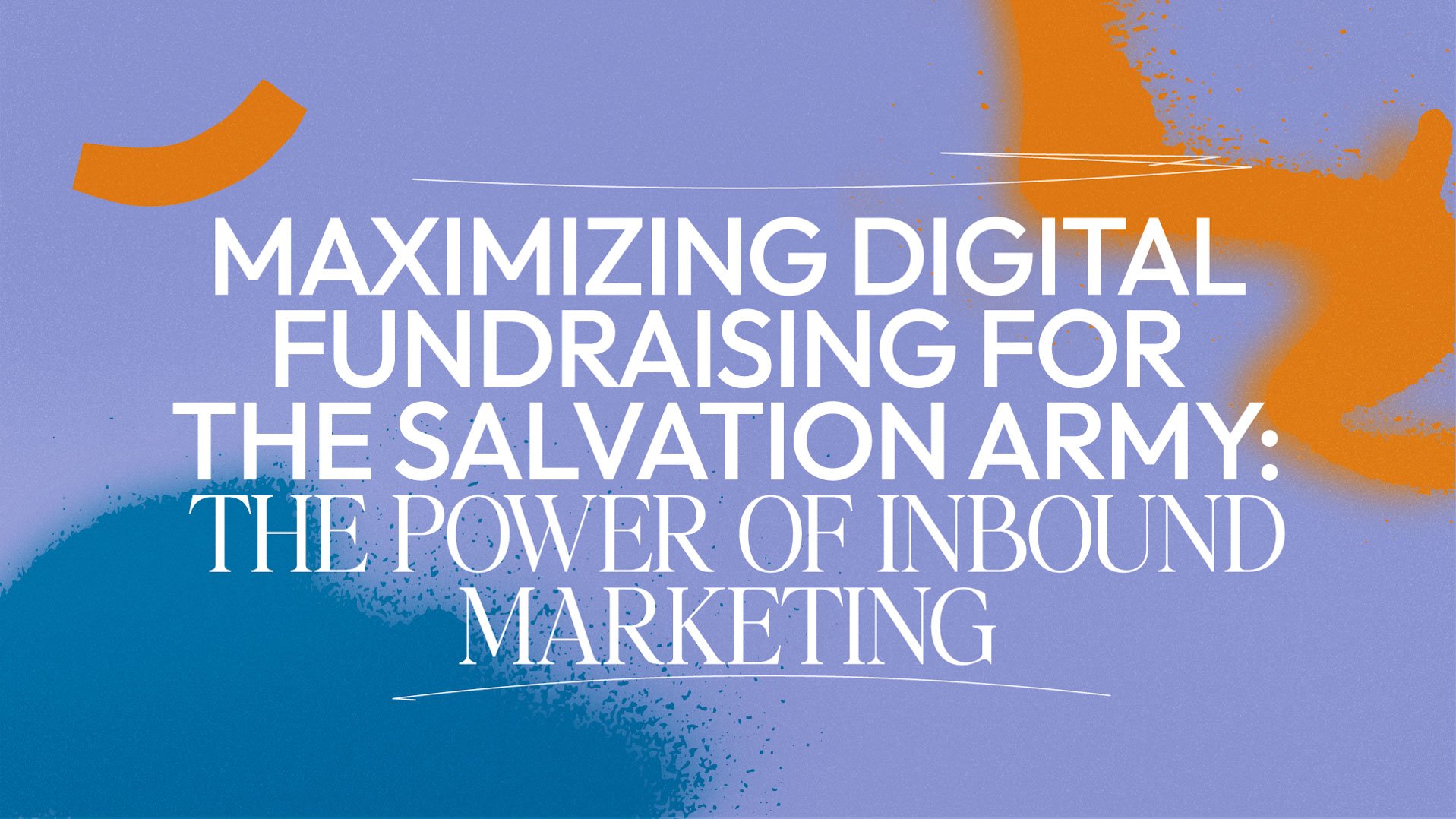Maximizing Digital Fundraising for The Salvation Army: The Power of Inbound Marketing
In today's rapidly evolving digital landscape, nonprofits continuously seek innovative strategies to maximize their fundraising efforts. One such strategy that has gained significant traction is inbound marketing. In this blog post, we'll explore the concept of inbound marketing for The Salvation Army, its effectiveness compared to outbound marketing, and how you can leverage it to enhance your digital fundraising initiatives.
Inbound marketing is a methodology that focuses on attracting customers or donors through relevant and valuable content rather than with traditional advertising methods. It involves creating and sharing content that addresses the needs and interests of your target audience, ultimately driving engagement, trust, and conversions. Instead of presenting our services and asking for donations, we are becoming their source of education for a topic they are willing to give their best email.
Inbound marketing stands in contrast to outbound marketing, which relies on cold calling, direct mail, and advertisements to reach potential supporters. While outbound marketing can be effective, it often feels intrusive and needs more personalization and authenticity that define inbound strategies. Likewise, inbound marketing allows you to modify your campaign as it runs to continually optimize based on real-time data. Whereas with outbound marketing, you have to wait until the campaign ends to analyze data and make adjustments.
Inbound marketing offers several advantages for nonprofits aiming to elevate their digital fundraising strategies:
Personalization: Tailoring content based on donor preferences and online behaviors creates a personalized experience.
Engagement: Interactive and compelling content encourages active engagement, increasing awareness and support for the cause.
Authenticity: Authentic storytelling builds trust and credibility, driving donor loyalty and long-term relationships.
Measurable Results: Digital tools and analytics can help you track and measure the impact of your inbound marketing efforts, optimizing campaigns in real-time before the campaign ends.
At its core, inbound marketing revolves around creating valuable and relevant content that addresses the needs and interests of your target audience.
In addition to content creation, optimizing for search engines (SEO) is crucial to inbound marketing success. More on that in a bit…
Social media also plays a pivotal role in inbound marketing for nonprofits. Platforms like Facebook, Twitter, Instagram, and LinkedIn offer opportunities to connect with these new potential donors.
Moreover, nurturing leads through personalized experiences is key to converting prospects into donors. By segmenting your audience based on their interests, preferences, and engagement levels, you can deliver targeted content, personalized emails, and tailored experiences that resonate with each individual.
The biggest challenge is identifying the high-value content that your future donors are searching for. First, we look at the data. Platforms like Google Analytics provide valuable data on website traffic, user behavior, and conversion metrics, enabling nonprofits to track the performance of their inbound efforts and make data-driven decisions.
Keyword research tools such as SEMrush, Ahrefs, and Moz Keyword Explorer can help identify relevant keywords and topics to target in content creation efforts. These tools provide insights into search volume, competition, and what people in your specific location are searching for.
Additionally, content management systems (CMS), like Adespresso and Ortto, offer robust features for creating, publishing, and managing content across multiple channels to create a seamless, segmented journey.
Now, you must find a tie between the most sought-after content and a program The Salvation Army offers. Here’s where we get to play with creativity! If the most popular searches revolve around “mountain biking,” you don’t necessarily have to start offering mountain biking at your corps. We can use the narrative to connect mountain biking to outdoor skills and summer camp.
The second challenge is finding the top topics that are highly searched and identifying which one you can sustainably create content about. In our Central Maryland case study, healthy, gluten-free baking was a top query, and we were able to partner with a chef who developed custom recipes for the project. If content creation for that topic is reasonably achievable, that’s the one!
Inbound marketing not only enables regular communication with potential donors but also adds value to each interaction. This grants you an opportunity to occasionally seek support for your local programs and services without overwhelming your audience. In fact, some donors may find your content so valuable that they choose to make a monthly commitment to access premium content, which we'll delve into in a future discussion.
In conclusion, inbound marketing is a powerful tool for nonprofits like The Salvation Army to amplify their digital fundraising impact. By prioritizing authentic storytelling, engaging content, and community building, you can inspire action, drive donations, and make a lasting difference in the lives of those you serve.








